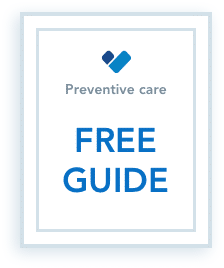What is an out-of-pocket maximum?
Worried that one health emergency might lead to a pile of medical bills that would wreck your financial security? Healthcare costs don’t have to keep you awake at night. You can hedge your worries knowing that thanks to the Affordable Care Act (ACA), if you have a health insurance plan, you also have an out-of-pocket maximum. An out-of-pocket maximum is just another way that health insurance works to protect you in situations just like this. By making sure you’re not paying an endless amount forever because the unimaginable has happened.
What is an out-of-pocket maximum?
Simply put, an out-of-pocket maximum is the most amount of money you have to pay for covered medical services on your health insurance plan in a single plan year. After you have spent this out-of-pocket maximum, through any combination of deductibles and copayments, your health insurance plan will then pay 100 percent of all costs for any covered benefits on your plan. It is a way to guarantee that there will be a cap on your out-of-pocket costs in any given year for your covered health benefits.
It’s important to remember that your monthly premiums for your health insurance plan don’t go towards meeting your annual out-of-pocket maximum. And the out-of-pocket maximum also doesn’t include any out-of-network services or care you receive.
How do I meet my out-of-pocket max?
You can meet your out-of-pocket maximum through any payments you make in the form of deductibles, copayments to providers, and any coinsurance payments.
Annual Deductible
Your annual deductible for your health insurance plan is the amount you’ll pay in out-of-pocket expenses before your insurance starts covering part or all of your healthcare costs for covered services. Once you’ve met your deductible, you will only pay copayments and your coinsurance amounts for your healthcare. This is when a lot of the real savings associated with your health insurance really begin. After your deductible, the amount you will pay for the calendar year is limited by your out-of-pocket maximum.
Copays
Your copayments, or copays, are the fixed, contracted amount that you will pay for a certain healthcare service after you have met your deductible. After you meet your deductible, when you see a doctor, you will pay a given amount in a copay. This copay is a specific amount. It is based on a negotiated rate established between your insurance company and that provider. There are typically various amounts for copays for different kinds of providers. For example, there’s usually one amount for your primary care provider. then, another amount for specialist care. Typically you’ll have another amount for urgent care, and another copay amount for emergency room care. Your health insurance has a set amount they’ve negotiated for payment with any provider for any given service. You copayment for a given service will reflect the amount you owe depending on whether or not you’ve met your annual deductible yet.
Co-insurance
Lastly, your co-insurance amount is the amount you will pay for a covered service after you have met your deductible. After this, you will only pay for ‘x’ percentage of the negotiated amount of that service. That is your co-insurance. Then your health plan pays the remaining percent.
Keep in mind that plans with lower monthly premiums typically come with a high deductible. And when thinking about your out-of-pocket maximum, that means more medical costs that are out-of-pocket costs for you. Similarly, plans with higher premiums typically have lower deductibles. And this means you’ll be paying a smaller dollar amount for your medical care before your health insurance company pays. So when comparing plans during the Open Enrollment Period, don’t forget that lower premiums might not translate into more cost savings should you be faced with a medical emergency.
Do all health insurance plans have an out-of-pocket max?
Not all health insurance plans have deductibles, but all health insurance plans do have out-of-pocket maximums. The Affordable Care Act made sure your health plan has that built-in form of consumer protection. Now, every health insurance plan has an annual cap on how much an individual consumer can spend on in-network care.
What’s the difference between a deductible and out-of-pocket max?
There are two main factors that contribute to how much you might spend in a given year on healthcare. The first is the amount of your annual deductible. And the second is the amount of your annual out-of-pocket maximum. However, the two are far from the same thing. The connection between one and the other is crucial to understanding how much you might stand to owe should you be forced to deal with an intense, chronic condition or an unexpected health emergency.
Your deductible is the amount you will pay out-of-pocket for your healthcare services in a calendar year before your insurance starts to help pay for all or part of your care. After you meet your deductible amount, you will then pay your coinsurance amount for all covered care. This is a percentage of the total cost for a covered healthcare service. You will pay a given percentage, and then after that, your insurance company will pay for the rest.
Your out-of-pocket maximum is the cap on how much you will pay for covered care in a calendar year total. Your deductible, copayments, and coinsurance payments all go towards your out-of-pocket maximum. Once you meet your out-of-pocket maximum, your health plan will pay for your covered health services in full.
Do all medical expenses count towards my out-of-pocket max?
Just about all covered medical expenses count towards your out-of-pocket maximum. Because of this, it’s important to be familiar with the details of your specific health insurance plan. This way, you will best understand exactly what your plan does cover and what your financial obligations are.
Also, don’t forget that your monthly premiums do not count towards your out-of-pocket maximum. And any money you spend on healthcare not covered by your insurance plan won’t count towards that annual cap either.
Will I still have copays after my out-of-pocket maximum is met?
With most health plans, you won’t have a copay after you meet your out-of-pocket maximum. Make sure you spend time familiarizing yourself with the details of your own plan to fully understand your financial responsibilities after your out-of-pocket maximum is met. That way, you will be prepared for your costs and understand what kinds of costs you might incur. Individual plans may have varying details when it comes your financial obligations for your care.
Does my out-of-pocket maximum include prescriptions?
For most plans, your prescription drug costs will go towards your out-of-pocket maximum. Again, be sure to check the details of your individual health plan, though. Some might have some specific nuances when it comes to prescription drugs and your out-of-pocket maximum.
How does an out-of-pocket max work on a family plan?
Each person on a family plan is subject to their own out-of-pocket maximum. However, when the sum total of those maximums reaches the family out-of-pocket maximum, your family health plan will then begin to pay in full for all covered costs of those on that family plan.
So how much is the average out-of-pocket maximum?
For the 2019 plan year: The out-of-pocket limit for a Marketplace plan is $7,900 for an individual plan and $15,800 for a family plan. While this number may seem steep, it is there as a form of protection to ensure that there is some limit to your healthcare spending.
Conclusion
An out-of-pocket maximum works by putting a maximum limit on the amount you’ll have to spend on your covered healthcare for a given year. It’s yet another benefit of having health coverage thanks to the ACA. Once you meet your out-of-pocket maximum, your health insurance plan will assume all costs for your covered care for the rest of the plan year.














Leave a Comment